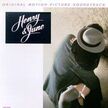The Marais in the 1920s and 1930s was filthy and chaotic, a bit like the Latin Quarter today, mixed with the smell of sex, vulgarity and cheap alcohol, which is also the most exciting part, making the artist linger. Whether you have a Paris complex or not, you will be fascinated by Paris in the 1930s. Sunny mansions, shady Canal Saint-Martin bridge holes, steep stone roads, and hidden taverns are all haunts of writer Henry Miller. He described Tropic of Cancer, including all the writers who were active in the Marais at that time, as well as various strange artists and prostitutes. At that time, Paris was also the settlement of another female writer Anais Nin. She and her close friend June (real name Mona), a mysterious woman, Henry's wife, accompanied the night patrol in brocade clothes. Anais wears a dignified dress, always wearing a bell hat and matching hand socks and a bag, while June is flamboyantly debauched, trimmed in mink fur, with a tinge of Russian flair. Dostoevsky, June's most admired writer, asked Henry to imitate her style and write an autobiography for her. The two of them went from being friends to getting in and out of each other constantly, which made people wonder. The Marais district of Paris in the 1920s and 1930s was not at all conservative, but it was not as open as it is today. The two women shuttled through the streets of the downtown area, entered a bar where dragons and snakes were mixed, and danced together, becoming a distinctive and unique landscape. Henry Miller was also deeply attracted by the two women, and was more impressed by Anais' innocence and naturalness. The story shows the ups and downs of the three people's feelings. However, it is not as sour as today's love triangle. If Anais is a model of a woman in the upper class, with a rebellious and wild heart, then June is completely a portrayal of a deviant woman, who is indulgent, spends her money, loves women, and has an avant-garde and independent spirit. The two of them were attracted to each other's temperament, disregarding the crowd, and fell for it.
In the end, Anais and her husband, the young banker Hugo, were driving down the flagstone while Henry trailed on his bike, and Anais didn't care what he said. She dresses elegantly and delicately, and once again wears all the decorations, as if she is ready to return to the life of high society, saying goodbye to the absurd and uninhibited days, the sun is shining, but her heart is struggling, just like her own Monologue: "I weep because I paid a painful price for being a woman; and because I will not cry easily in the future, and I am not used to this numbness yet." Totally out of touch.
View more about
Henry & June reviews











